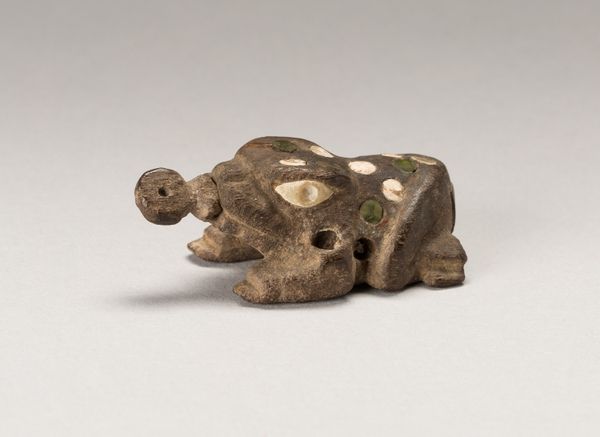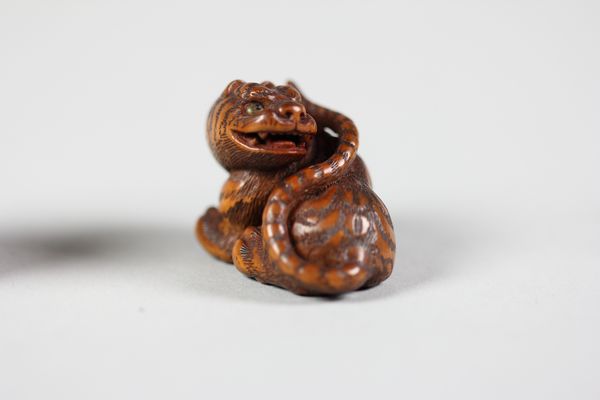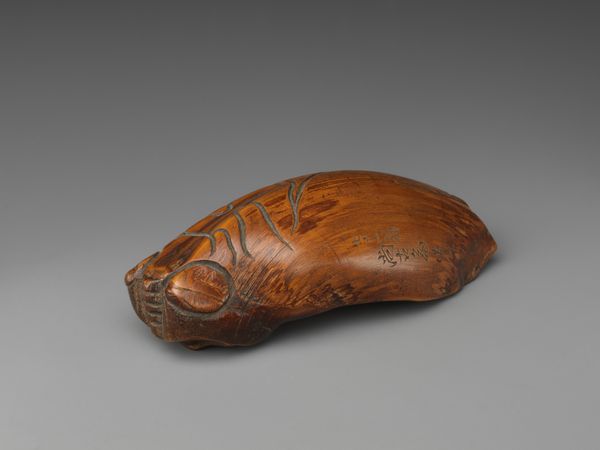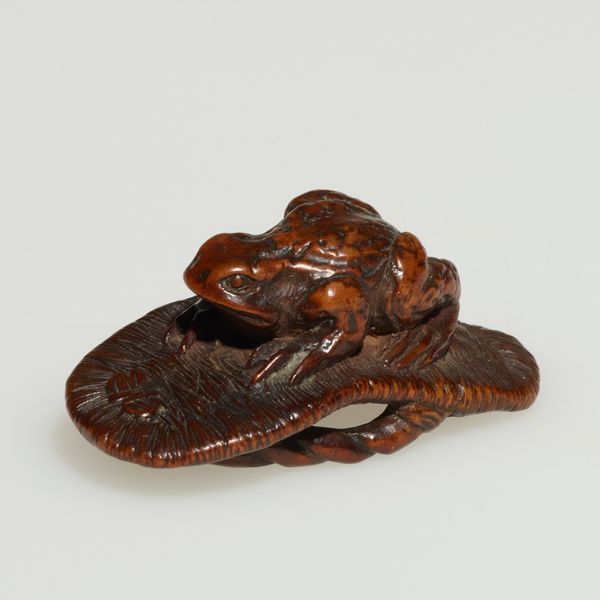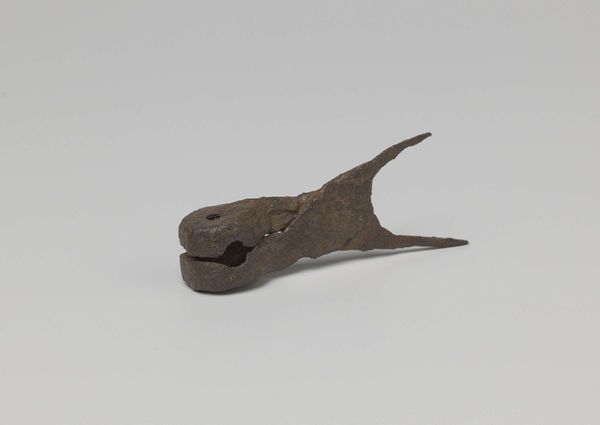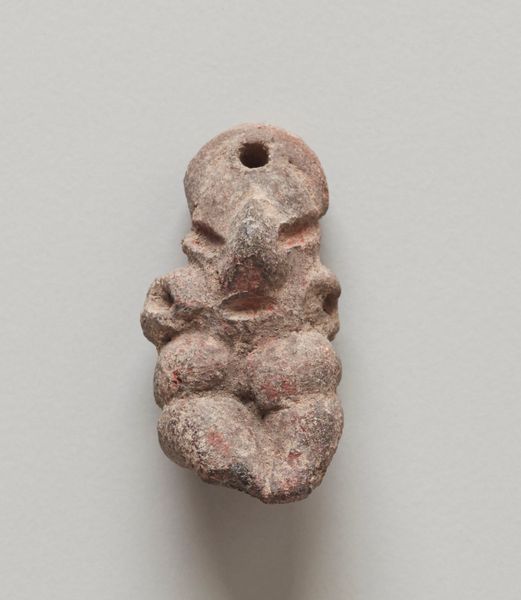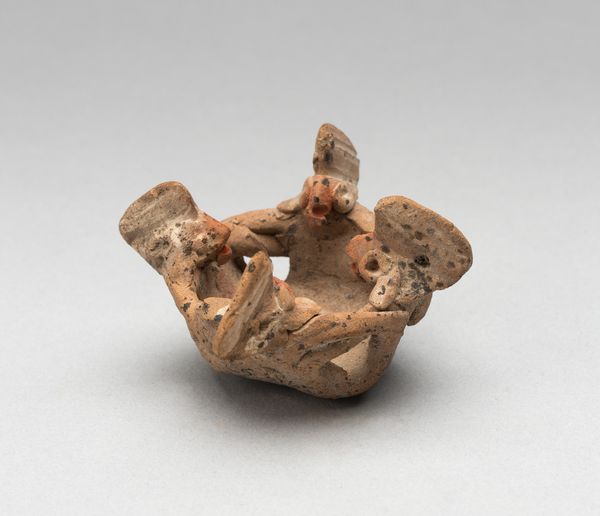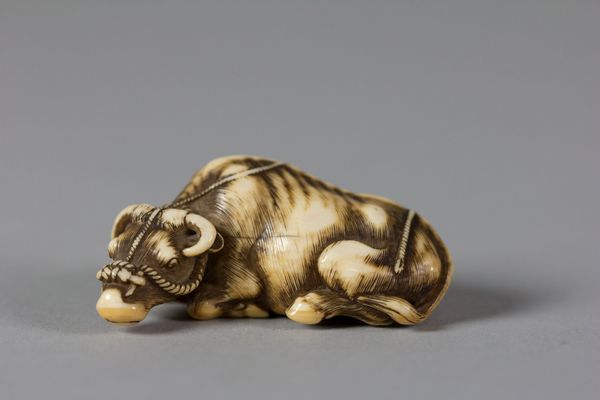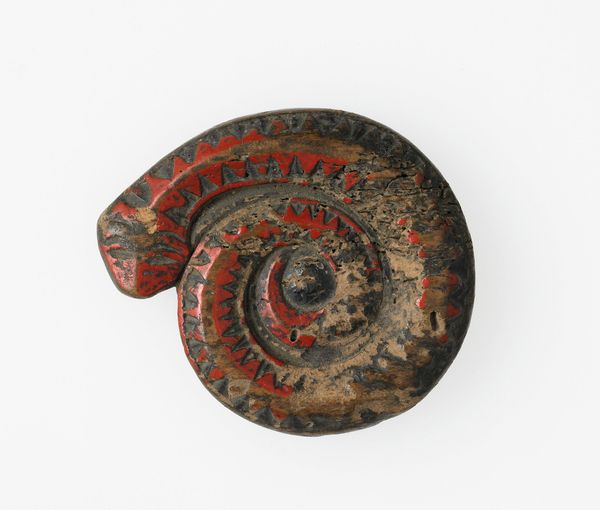
ceramic, sculpture, terracotta
#
ceramic
#
figuration
#
form
#
sculpture
#
terracotta
#
indigenous-americas
Dimensions: 3.9 × 2.2 cm (1 1/2 × 3/4 in.)
Copyright: Public Domain
Curator: Isn't this "Container for Lime in the Shape of a Frog" utterly charming? It was crafted by the Tiwanaku culture, sometime between 600 and 1000. Editor: It’s... rustic. Definitely feels hand-molded, I can see the imperfections in the clay, that’s pretty intriguing actually. And those applied spots give it some playful charm. What's this piece made of? Curator: It's ceramic, quite skillfully sculpted, though seemingly utilitarian despite its decorative elements. It currently resides at the Art Institute of Chicago. These containers, filled with lime, were crucial for processing coca leaves which, socially and spiritually, connected individuals to their community. Editor: Ah, so it's about process: the chemical transformation, and its social ritual, very interesting! I like how it connects everyday actions with a wider social function. You can almost see the marks of the maker on this little guy. Did they use molds? I'm guessing that they did since we have many examples, all sharing similar characteristics. Curator: The creation of lime containers was likely a widespread craft; many skilled artisans throughout the region probably participated. But the act of gifting or possessing it marked someone's elevated status. These weren’t everyday objects, they signify the social hierachies present in the community. Editor: The color too! What paint was used? The material is everything when we talk about its social function, right? Curator: Analysis has shown that the reddish color comes from iron oxides. Natural pigments readily available in the region. That stark color, placed with geometric precision, undoubtedly would underscore social meanings and status. Editor: Seeing how deliberately the patterns have been placed, even with natural pigments and local material, speaks volumes of their cultural artistry and technical skill! A lot is packed in here materially and technically when looking at the context of how they worked. Curator: Absolutely, and thinking about it now I am appreciating better how a frog's association with water and fertility, as well as this type of lime-container in the Tiwanaku culture is shaping the reception of it as an image loaded with meanings about life, wealth, and access. Editor: I love how even this small frog touches so many elements like access to labor, natural material access, status in community through coca, and it opens questions about those values within society through art. Curator: Indeed. It offers us a compelling peek into ancient Andean life. Editor: And material processes are key to our knowledge.
Comments
No comments
Be the first to comment and join the conversation on the ultimate creative platform.
